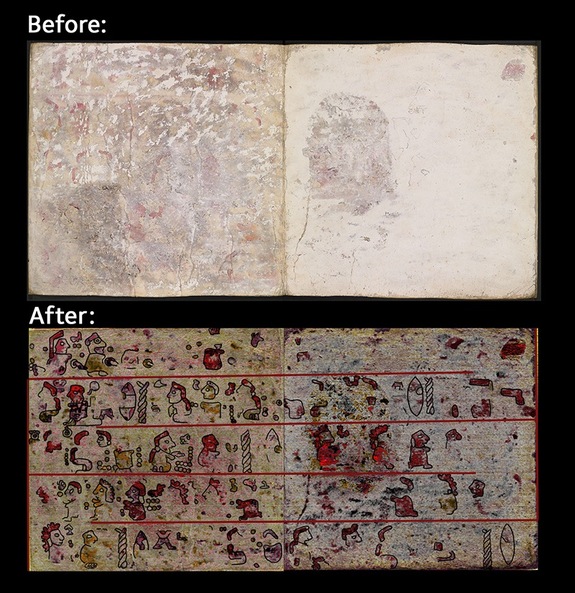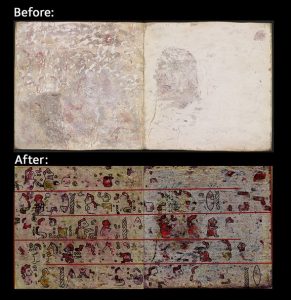Storytelling images on a deer-hide “manuscript” from Mexico have been seen for the first time in 500 years, thanks to sophisticated scanning technology that penetrated layers of chalk and plaster. This “codex,” a type of book-like text, originated in the part of Mexico that is now Oaxaca, and is one of only 20 surviving codices that were made in the Americas prior to the arrival of Europeans. The codex’s rigid deerskin pages were painted white and appeared blank, but those seemingly empty pages came to reveal dozens of colorful figures arranged in storytelling scenes, which were described in a recently published study. Known as the Codex Selden, the mysterious book dates to about 1560. Other Mexican codices recovered from this period contained colorful pictographs — images that represent words or phrases — which have been translated as descriptions of alliances, wars, rituals and genealogies, according to the study authors. But Codex Selden was blank — or so it seemed. Made from a strip of deerskin measuring about 16 feet (5 meters) long, the hide was folded accordion-style into pages, which were layered with a white paint mixture known as gesso. In the 1950s, experts suspected that there might be more to this codex than its empty pages suggested, when cracks in the gesso revealed tantalizing glimpses of colorful images lurking underneath the chalky outer layer, which was likely added so that the book could be reused.
Read more at – http://www.livescience.com/55823-hidden-images-on-mexican-manuscript-revealed.html


